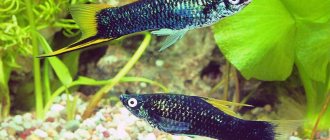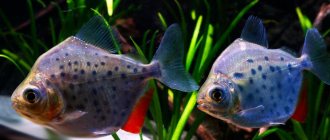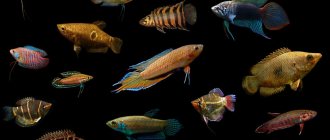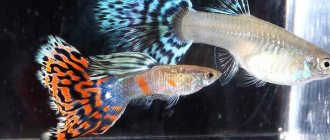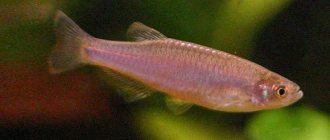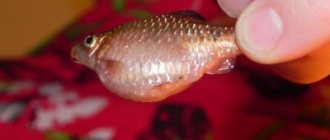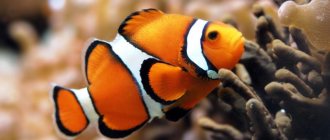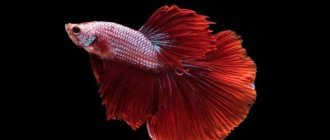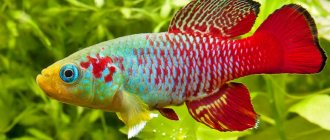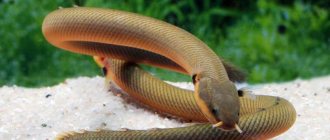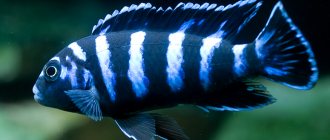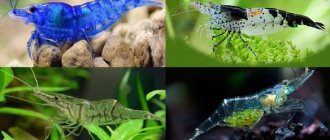Platydoras armatulus is a popular aquarium catfish species. Peace-loving, gets along with large neighbors, which it helps to cleanse itself of dirt and dead scales. This species of catfish is native to South Africa. Tolerant to harsh environmental changes. It is easy to care for and has a bright, beautiful color.
- 1 Description and natural habitat
- 2 Mr. Tail Recommends: Basics of Aquarium Keeping
- 3 Compatibility
- 4 Feeding
- 5 Breeding
- 6 Diseases and prevention
Description of the fish
Platydoras is a freshwater fish belonging to the Armored catfish family. The first scientific mention of fish dates back to 1840. In 2008, this fish was bred into a separate species. The name platidoras, translated from ancient Greek, means a wide, hard shell, which indicates a serious degree of external protection that nature itself has awarded the catfish: elastic skin, a developed occipital shield, the presence of bone growths along the lateral line.
Mobile platidoras are unpretentious to external conditions, are excellent orderlies of any aquarium, and prefer to eat food from the bottom.
A distinctive feature of this subspecies of catfish is their ability to produce sounds. They do this in two simple ways: by rubbing the pectoral fins against the sensitive grooves of the shoulder joints, as well as by quickly contracting and relaxing the muscle groups attached to the skull on one side, and to the fragile swim bladder on the other. Thanks to the creation of such a natural “spring”, sounds similar to drumming are released.
Catfish produce sounds when they meet other representatives of the aquarium environment, or when scared. Thanks to this distinctive feature, they received such a name.
Habitat in nature
Its habitat is the Rio Orinoco basin in Colombia and Venezuela, part of the Amazon basin in Peru, Bolivia and Brazil. It feeds on mollusks, insect larvae and small fish.
It can often be seen on sandbanks, where Platydoras likes to burrow into the ground.
Juveniles have been observed cleaning the skin of other fish. Apparently the bright color serves as an identification signal, allowing one to approach.
Varieties
As for platidoras, there are four popular varieties of these individuals.
Striped platidoras
This species became a separate category 13 years ago based on its natural habitat. Under natural conditions, the species is found throughout South America.
Striped platidoras
Striped catfish brachylesis
This species lives in a comfortable environment in sunny Brazil. Individuals are distinguished from others by striking yellow lines located along the entire body.
Striped catfish brachylesis
Raphael's unassuming platidoras
This widespread species lives throughout the country. The type is most often represented in the implementation.
Raphael's Platidoras
Platydoras Hancock
In the real environment, it lives not only in river reservoirs, but also in swamps, standing water with a minimum flow level. The species is distinguished by a brown line running along the entire length of the body.
Adviсe
- Platydoras is not aggressive. It is friendly to its neighbors, but may harbor fry, eggs and crustaceans. Choose medium to large sized fish.
- Neon lighting will not disturb residents and will allow you to observe their lives.
- Do not overfeed your pets. They have no sense of proportion.
- Use quality sinking feed and store it in vacuum packaging.
- Catfish live in stagnant bodies of water or with weak currents, so filtration should be moderate.
Platidoras is suitable for aquarists of any level. Easy care and infrequent feeding make it an ideal pet for busy people or office aquariums.
Previous
Fish Why are bettas called betta fish?
Next
Fish14 popular viviparous aquarium fish
Maintenance and care
Platydoras catfish is an unpretentious pet that does not require special conditions. Thanks to its medium size, the owner will not have to change the aquarium over time to a more spacious one.
Aquarium
To comfortably keep 1-2 individuals of unassuming Platydoras, an aquarium of 100 liters is enough. Since pets love various shelters, grottoes, tubes made of durable ceramics, artificial or natural driftwood are suitable as decorations. Catfish are predominantly nocturnal, preferring to hide in shelters during daylight hours.
Feeding
In natural conditions, they consume mollusks and crustaceans. At home they give:
- dry food in granules, tablets;
- live or frozen food rich in protein (tubifex, bloodworms, earthworms);
- vegetation (zucchini, cucumbers).
Food is collected from the bottom, which improves aeration in the aquarium. It is recommended to feed in the evening; these catfish are nocturnal. If Platidoras's abdomen is swollen, then the fish is allowed to starve for a couple of days. Prone to obesity. Adults are fed every other day.
Compatibility of catfish platidoras
As for the compatibility of catfish with other representatives of the aquatic world, they get along well with many fish. They are also capable of being friendly towards their larger neighbors. It is undesirable to be near small fish, since they will perceive them as food. Thanks to their protective armor, they can also live with large, aggressive fish. Large tetra fish, aquarium carp, gourami fish, and other types of catfish are perfect for the role of neighbors.
Tetra fish
Platidoras feels great both in a flock and alone. When kept in a group, catfish develop a sense of territoriality, so periodic clashes between large representatives will arise. The catfish then share the shelter with their brothers.
Arrangement of the aquarium
Aquarium striped catfish grow quickly, so they need to choose a container with a volume of about 150 liters. This species leads a bottom-dwelling lifestyle , so it needs large areas for swimming. It is better to give preference to rectangular aquariums with a lid. This solution allows you to grow a large number of plants.
The water temperature should not exceed +27°C and be lower than +22°C. Acidity 5−7 pH. The ideal medium would be neutral without salts. In Russia, almost all striped catfish are raised by local aquarists. Such individuals are more adapted to local water. They tolerate short-term hypothermia and other fluctuations in parameters more calmly.
A filter must be installed. It will allow the creation of small bottom currents. Some of the water is changed every week. Fine sand or round pebbles are suitable as soil.
Be sure to install various driftwood and plants. They dim the lighting and make it possible to hide under them.
Platydoras striped has good compatibility with large and medium-sized fish. Because of their thick armor and spikes, they are not afraid of attacks from predators. Some aquarium inhabitants also like shelters , and because of this, conflicts with catfish may arise, so you need to provide houses for all fish. They coexist well with cichlids, angelfish, goldfish and gouramis.
Reproduction of singing catfish
Striped catfish are able to reproduce in captivity, but this is associated with certain difficulties. This is an exclusively spawning fish; it is quite difficult to stimulate it to this action. Hormonal-based drugs help stimulate spawning. In this case, a couple of catfish are placed in the spawning tank.
During this period, an amateur aquarist observes the mating games of couples. The male, swimming above the female, tries to hook her with his pectoral fin. At this moment, the male’s light singing is heard.
Breeding
Puberty in Platidoras occurs in the second year of life. Natural reproduction in an aquarium is difficult; hormonal injections are used.
Producers are placed in a separate tank filled with soft (6-7 °dH) water to a height of 20 cm, heated to a temperature of +27...+30 °C. Shelters are installed on the bottom and floating vegetation (riccia) is added so that the catfish can create a nest for eggs. After laying, the fish are immediately removed so that they do not eat the offspring. It is recommended to catch them in plastic containers due to the presence of a large number of spines.
The incubation period lasts three days, then the fry are born. After two days they adapt, begin to swim and eat food.
Platydoras diseases
The striped platidora is susceptible to illness, like all other representatives of the aquarium world. The risk of getting sick in an environment that complies with the necessary standards is small. Often, fish owners encounter damage to their pets that occurs when they become entangled in a net or during transportation.
An increased content of harmful nitrates in the aquatic environment can cause an infectious disease of the whiskers in catfish, which entails difficult spatial orientation and problems with finding food. By regularly changing the aquatic environment, aquarists maintain nitrate levels no higher than 20 ppm.
Due to the absence of scales on the fish’s skin, it is treated with effective drugs pimafix or melafix. The use of traditional potassium permanganate or copper-containing preparations is unacceptable. An effective malachite green composition or active formalin is used in an amount of 1⁄4 of the recommended zone.
Diseases
By nature, Platidoras is a very hardy fish with high immunity. But, unfortunately, in closed water conditions there are frequent cases of viral diseases, parasites and the development of fungal infections .
The most common diseases in striped catfish:
- ichthyophthyriosis;
- fungal diseases.
The infected fish must be isolated from the rest before treatment begins.
Reviews
The aquarium catfish is of particular interest for study. He has a very original demeanor and is easy to care for. To prevent illnesses from overtaking it, it is recommended to provide the aquatic inhabitant with good aquarium conditions and comply with the required regulations. And a long-lived pet will delight its owner with its presence.
Did you like the singing catfish? Share in the comments!
